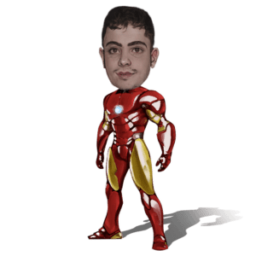Websites are becoming complex and bigger with each passing day. This is leading to slower loading of websites and ultimately, decreased sales conversions.
An average online shopper expected a website to load in a mere four seconds in the year 2006. Over the years, remarkable technological innovations have made it tougher to meet the expectations of an online shopper. Today, an online shopper wishes a website to load in only two seconds. Considering that a website’s loading time is so important, even Google has started factoring site speed into its algorithm while ranking websites.
If your website is rendering poor performance, users will not even think twice before abandoning it. Here are a few things that you should do to optimize your website’s speed.
Going Modular
If it is possible to combine two CSS classes and use less code to get the same result, you should do it instantly. This would make the code of modular type. However, this might not be necessary if you’re using basic HTML and CSS. On the other hand, following this advice becomes essential if your website is into the complex JavaScript world.
Minimizing HTTP & Dependency Requests
Dependency requests have been the biggest reason behind slow loading speed of a website. Any sort of additional request adds bloat and a new layer of complexity to the downloading and parsing process. Calling images from a stylesheet also counts as a request. Hence, you should limit the use of alternative optimization methods such as SVG or sprites.
If your website is large, you should consider using a Content Delivery Network (CDN). It would remove any type of slow server connections, reduce bandwidth, and improve global availability.
Writing More Readable & Smarter Code
The code that is being written can also be the reason behind slow loading of a website. The inefficiency of CSS or a bloated JavaScript can affect the loading times, unimaginably. Hence, instead of writing path down a chain of selectors, it would be in your best interest to use the smallest uniquely identifiable selector.
Keeping HTML simple
In order to write leaner CSS selectors and keep bloat to the minimum, one will have to write efficient HTML codes.
Resetting CSS will lead to restyling of all common elements. This means that even if you are not targeting the extra div, it is very likely that the extra div will slow down things because its padding and margin would be reset to a minimum. The problem would not be serious until a dozen of divs are reset.
Compressing Images and Text
There are several tools that can help you compress the text and images that you are using on your website.
A website that loads slowly disrupts a visitor’s browsing experience. Other than the size of the files, there are several other reasons like low server memory, data influx, site design, etc., which affect the performance and speed of a website. Hence, the bottomline is that you should monitor the performance of your website at regular intervals as it makes the difference between generating and not generating revenue.
If you have no idea about optimizing the loading speed of your website, you can get in touch with an expert web development company.
AUTOPOST by BEDEWY VISIT GAHZLY


